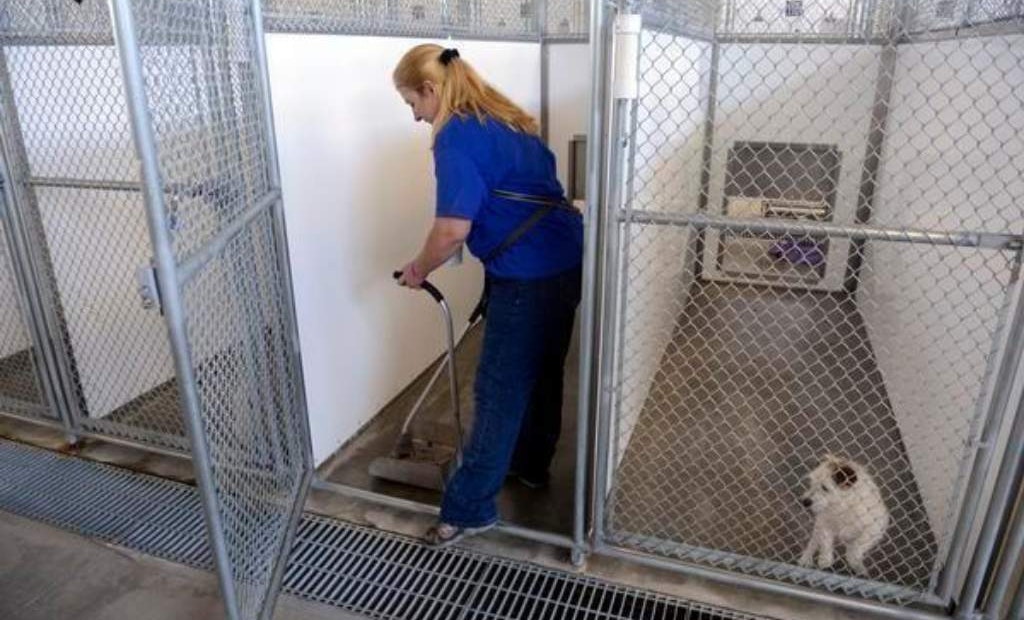Interested in Onsite Systems?
Get Onsite Systems articles, news and videos right in your inbox! Sign up now.
Onsite Systems + Get AlertsWastewater from dog kennels and veterinary clinics is not included in most septic regulations. Septic system sizing in state and local regulations is based on research of typical flows and wastewater characteristics from domestic residences. In some jurisdictions, waste from these types of facilities may be covered under animal waste regulations or prohibited from going into a septic system.
A septic system receiving animal waste is considered by the Environmental Protection Agency to be a Class V system. There are no specific EPA rules dealing with animal facilities whose wastewater goes into a septic system, although the EPA does require that a Class V inventory form be completed and mailed to appropriate agencies. State codes, along with local ordinances administered by counties, cities, and townships, may have provisions regarding these facilities and must be consulted.
In rural areas, often the only option for treating the washdown water from these facilities is through a septic system. This wastewater typically has high levels of ammonia nitrogen from urine, along with large amounts of hair and sanitizer, all of which are challenging for septic system.
Property owners should be encouraged to consider the following options:
Option 1 - All waste could go into a holding tank and either be land-applied or taken to a wastewater treatment plant.
Option 2 - Use an onsite septic system to treat the wastewater. If this is being done, consider following the recommendations below.
1. Keep human waste from the facility separate in case there are problems related to the animal waste.
2. A flowmeter should be installed to determine the design flow. Flow data should be collected at representative times (trying to target busy days) and over several months. If no facility exists or an expansion is planned, estimates should be made based on maximum occupancy, cleaning schedule and gallons used per washdown and then include a safety factor (approximately 1.5 times estimated flow). A flowmeter should be installed to verify estimates.
3. If existing septic tanks are in place, samples should be taken to determine the quality of the effluent. Either these samples should be taken from the outlet baffle of the last septic tank or a pump tank if one exists. This effluent should be sampled for BOD, TSS and ammonia. If these levels come back high, a pretreatment unit should be designed to lower the levels to normal domestic strength levels. Typical normal levels of sewage leaving a septic tank are:
- BOD < 220 mg/L
- TSS < 65 mg/L
- Ammonia < 60 mg/L
If no septic tanks exist or if it is a new facility, the wastewater characteristics must be estimated. Wastewater characteristics are hard to predict and should be sampled once the facility has been in operation for three months, and pretreatment should be designed to deal with known levels. It is critical that no hazardous waste enter any onsite septic system.
4. The operators of the kennel or vet clinic should try to prevent medicine from entering the septic system, and the use of cleaning chemicals should be limited, including antibacterial soaps and quaternary ammonia. Onsite septic systems can deal with a small amount of cleaning chemicals, but if the amount is above typical domestic usage, the performance of the system may be impacted.
5. All solid dog waste should be dealt with as a solid waste. This could be composted or landfilled.
6. Fine grates or screens should be put on all floor and sink drains to catch any small particles and hair.
7. Extra septic tank capacity should be installed (four times the design flow) to try to catch hair that will make its way through the system.
8. A commercial-size effluent filter (designed for high-strength waste) should be placed on the outlet of the last septic tank. A manhole or hatch should be located over this filter as there is high potential for maintenance at this location.
9. If pressure distribution is used to distribute wastewater, 1/4-inch orifices should be designed with a minimum of 5 feet of head.
10. Clean-outs should be provided at the ends of gravity and pressure distribution lines in the event that hair does make it out to the distribution system. The lines should be evaluated at least once per year. Also, in the soil treatment area, inspection pipes should be finished above the ground surface and should be observed annually (at minimum) for ponding.
11. Provide space for a future advanced treatment unit and additional soil treatment area.
12. Recommend that the system be used under an operating permit.
13. A maintenance contract should be in place with a licensed on-site professional to assure the proper operation and maintenance of the treatment system.
14. Conduct an annual visit with the system owner about waste strength concerns.
If you are designing or installing a septic system for a facility that involves dog waste, care must be taken or the system may not last and adequately treat wastewater for the long term.






